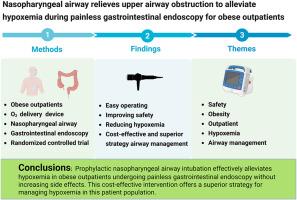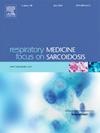一项前瞻性随机对照试验:鼻咽气道缓解上呼吸道阻塞以减轻肥胖门诊患者在无痛胃肠内镜检查期间的低氧血症。
IF 3.1
3区 医学
Q2 CARDIAC & CARDIOVASCULAR SYSTEMS
引用次数: 0
摘要
目的:探讨鼻咽部气道插管对门诊无痛胃肠内镜下肥胖患者低氧血症的缓解作用。方法:本前瞻性单中心随机对照试验在中国德阳市人民医院进行。计划进行无痛胃肠内镜检查的肥胖门诊患者随机分为鼻咽气道组(N组)和对照组(C组)。检查前进行鼻咽气管插管。主要结果是低氧血症的发生率,次要结果包括插管时间、由于去饱和引起的手术中断、安全事件、视觉模拟量表(VAS)评分、满意度评分和设备放置指标。结果:N组共88例,C组共86例。低氧血症发生率N组为2.27%,C组为37.21% (P < 0.001)。内镜检查后,C组脉搏血氧饱和度明显低于N组(P = 0.001)。插管和拔管时生命体征差异无统计学意义(P < 0.05)。N组内窥镜医师和麻醉医师满意度分别为9.97±0.18比9.73±0.82 (P = 0.01)和9.89±0.47比9.10±1.15 (P < 0.001),均高于C组。N组87例患者接受鼻咽气道插管,其中69例在5秒内完成插管,18例在10秒内完成插管,1例在15秒内需要两次插管。N组患者VAS评分均≤3分。结论:预防性鼻咽气管插管可有效缓解门诊无痛胃肠内镜下肥胖患者的低氧血症,且不增加不良反应。这种具有成本效益的干预措施为管理低氧血症患者提供了一种优越的策略。本文章由计算机程序翻译,如有差异,请以英文原文为准。

Nasopharyngeal airway relieves upper airway obstruction to alleviate hypoxemia during painless gastrointestinal endoscopy for obese outpatients: a prospective randomized controlled trial
Purposes
To investigate the efficacy of nasopharyngeal airway intubation in alleviating hypoxemia in obese outpatients undergoing painless gastrointestinal endoscopy.
Methods
This prospective single-center randomized controlled trial was conducted at the Deyang People's Hospital, Deyang, China. Obese outpatients scheduled for painless gastrointestinal endoscopy were randomly assigned to either the nasopharyngeal airway (Group N) or control group (Group C). Nasopharyngeal airway intubation was performed prior to the examination. The primary outcome was the incidence of hypoxemia, while secondary outcomes included intubation duration, procedural interruptions due to desaturation, security events, visual analog scale (VAS) scores, satisfaction scores, and device placement metrics.
Results
A total of 88 patients in Group N and 86 patients in Group C were analyzed. The incidence of hypoxemia was 2.27 % in Group N compared to 37.21 % in Group C (P < 0.001). Post-endoscopy, pulse oxygen saturation in Group C was significantly lower than in Group N (P = 0.001). Vital signs showed no differences at the time of intubation and extubation (P > 0.05). Satisfaction scores for endoscopists and anesthesiologists were higher in Group N than in Group C, with scores of 9.97 ± 0.18 vs. 9.73 ± 0.82 (P = 0.01) and 9.89 ± 0.47 vs. 9.10 ± 1.15 (P < 0.001), respectively. In Group N, 87 patients received nasopharyngeal airway intubation, with 69 intubations completed within 5 s, 18 within 10 s, and one patient requiring two attempts within 15 s. In Group N, the VAS score for all patients was ≤3.
Conclusions
Prophylactic nasopharyngeal airway intubation effectively alleviates hypoxemia in obese outpatients undergoing painless gastrointestinal endoscopy without increasing side effects. This cost-effective intervention offers a superior strategy for managing hypoxemia in this patient population.
求助全文
通过发布文献求助,成功后即可免费获取论文全文。
去求助
来源期刊

Respiratory medicine
医学-呼吸系统
CiteScore
7.50
自引率
0.00%
发文量
199
审稿时长
38 days
期刊介绍:
Respiratory Medicine is an internationally-renowned journal devoted to the rapid publication of clinically-relevant respiratory medicine research. It combines cutting-edge original research with state-of-the-art reviews dealing with all aspects of respiratory diseases and therapeutic interventions. Topics include adult and paediatric medicine, epidemiology, immunology and cell biology, physiology, occupational disorders, and the role of allergens and pollutants.
Respiratory Medicine is increasingly the journal of choice for publication of phased trial work, commenting on effectiveness, dosage and methods of action.
 求助内容:
求助内容: 应助结果提醒方式:
应助结果提醒方式:


